
Carlo Gambino was an Italian-American crime boss of the Gambino crime family. After the Apalachin Meeting in 1957, and the imprisonment of Vito Genovese in 1959, Gambino took over the Commission of the American Mafia until his death from a heart attack on October 15, 1976. During more than 50 years in organized crime, he served only 22 months in prison for a tax evasion charge in 1937.
Black Hand or The Black Hand may refer to:

Joseph Gallo, also known as "Crazy Joe", was an Italian-American mobster and Caporegime of the Colombo crime family of New York City.
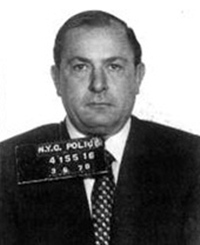
Joseph Anthony Colombo Sr. was the boss of the Colombo crime family, one of the Five Families of the American Mafia in New York City.
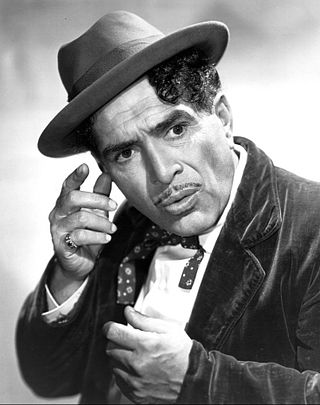
Joseph Patrick Carrol Naish was an American actor. He appeared in over 200 credits during the Golden Age of Hollywood.

Armand Anthony Assante Jr. is an American actor. He played mobster John Gotti in the 1996 HBO television film Gotti, Odysseus in the 1997 mini-series adaptation of Homer's The Odyssey, Nietzsche in When Nietzsche Wept, and Mickey Spillane's Mike Hammer in 1982's I, the Jury. His performance in Gotti earned him a Primetime Emmy Award and nominations for the Golden Globe Award and the Screen Actors Guild Award.

Sahara is a 1943 American action war film directed by Zoltán Korda and starring Humphrey Bogart as an American tank commander in Libya who, along with a handful of Allied soldiers, tries to defend an isolated well with a limited supply of water from a German Afrika Korps battalion during the Western Desert Campaign of World War II.
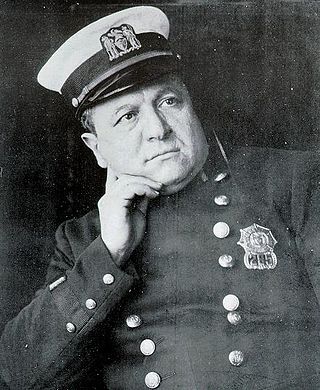
Joseph Petrosino was an Italian-born New York City Police Department (NYPD) officer who was a pioneer in the fight against organized crime. Crime fighting techniques that Petrosino pioneered are still practiced by law enforcement agencies.
Hans Heinrich von Twardowski was a German film actor.
Mafia films—a version of gangster films—are a subgenre of crime films dealing with organized crime, often specifically with Mafia organizations. Especially in early mob films, there is considerable overlap with film noir. Popular regional variations of the genre include Italian Poliziotteschi, Chinese Triad films, Japanese Yakuza films, and Indian Mumbai underworld films.

Martin Kosleck was a German film actor. Like many other German actors, he fled when the Nazis came to power. Inspired by his deep hatred of Adolf Hitler and the Nazis, Kosleck made a career in Hollywood playing villainous Nazis in films. While in the United States, he appeared in more than 80 films and television shows in a 46-year span. His icy demeanor and piercing stare on screen made him a popular choice to play Nazi villains. He portrayed Joseph Goebbels, Adolf Hitler's propaganda minister, five times, and also appeared as an SS trooper and a concentration camp officer.
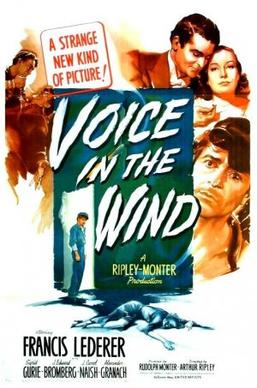
Voice in the Wind is a 1944 American film noir directed by Arthur Ripley and written by Friedrich Torberg, based on a story written by Arthur Ripley. The drama features Francis Lederer, Sigrid Gurie and J. Edward Bromberg.

Black Hand extortion was a criminal tactic used by gangsters based in major cities in the United States. In Chicago, Black Hand extortion began around 1900 and had all but faded away by 1920, replaced by the Mafia. The Mafia was initially organized by Johnny Torrio and further organized by Al Capone into the extant Chicago Outfit sometime later. Black Handers in Chicago were mostly Italian men from Calabria and Sicily who would send anonymous extortion notes to their victims emblazoned with a feared old country symbol: the "Black Hand". The Black Hand was a precursor of organized crime, although it is still a tactic practiced by the Mafia and used in organized crime to this day. The Black Hand gangsters of this time period differed from the Mafia by lacking formally structured hierarchies and codes of conduct, and many were essentially one-man operations. Black Hand blackmail was also common in New York, Boston, and New Orleans. Victims would be threatened with being beaten, shot, or have their place of business bombed if they did not pay. Starting around 1909, Black Hand activity was causing difficulties for mob boss Big Jim Colosimo, a former Black Hand gangster and owner of brothels throughout Chicago. Colosimo's life was being threatened with demands for cash to ensure his physical safety. In an effort to fix the problem, he recruited Johnny Torrio, who was a member of New York's Five Points Gang at the time, to come to Chicago. Torrio would later become the famous successor to Big Jim Colosimo and mentor Al Capone as the organized crime ruler of Chicago.

New York Confidential is a 1955 film noir crime film directed by Russell Rouse starring Broderick Crawford, Richard Conte, Marilyn Maxwell, Anne Bancroft and J. Carrol Naish.

Pay or Die is a 1960 American biographical and crime film directed by Richard Wilson and starring Ernest Borgnine, Zohra Lampert, Howard Caine, Alan Austin, and Robert F. Simon.

Crazy Joe is a 1974 crime film directed by Carlo Lizzani and produced by Dino De Laurentiis. The Italian-American co-production is a fictionalized retelling of the murder of Joseph "Crazy Joe" Gallo, a mobster who was gunned down on April 7, 1972, at a restaurant in Little Italy. The screenplay by Lewis John Carlino is based on a series of articles by journalist Nicholas Gage. The film stars Peter Boyle in the title role, with Paula Prentiss, Fred Williamson, Rip Torn, Luther Adler, Henry Winkler and Eli Wallach.
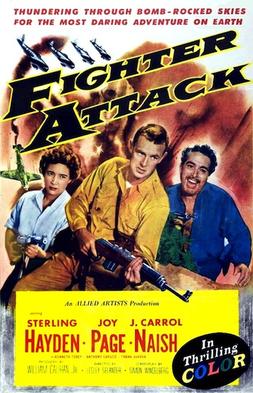
Fighter Attack is a 1953 American World War II film directed by Lesley Selander. The film stars Sterling Hayden, Joy Page and J. Carrol Naish. It reunited Hayden and Selander, who had worked together on Flat Top in 1952. The film is set in Nazi-occupied Italy and involves a U.S. fighter pilot's last sortie, and the help he receives from Italian partisans in an effort to complete his mission after he is shot down in enemy territory.

Night Club Scandal is a 1937 American thriller film directed by Ralph Murphy and written by Lillie Hayward. The film stars John Barrymore, Lynne Overman, Louise Campbell, Charles Bickford, Harvey Stephens, J. Carrol Naish and Evelyn Brent. The film was released on November 19, 1937, by Paramount Pictures. It was based on a play by Daniel Nathan Rubin.

Dr. Broadway is a 1942 American mystery film directed by Anthony Mann and written by Art Arthur. The film stars Macdonald Carey, Jean Phillips, Eduardo Ciannelli, Richard Lane, J. Carrol Naish, Joan Woodbury and Arthur Loft. The film was released on May 9, 1942, by Paramount Pictures.
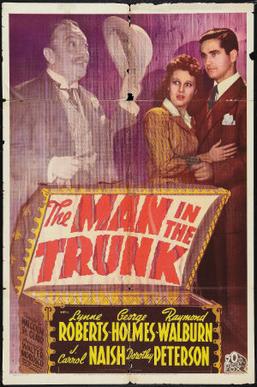
The Man in the Trunk is a 1942 American comedy film directed by Malcolm St. Clair and written by John Larkin. The film stars Lynne Roberts, George Holmes, Raymond Walburn, J. Carrol Naish, Dorothy Peterson and Eily Malyon. The film was released on September 18, 1942, by 20th Century Fox.

















